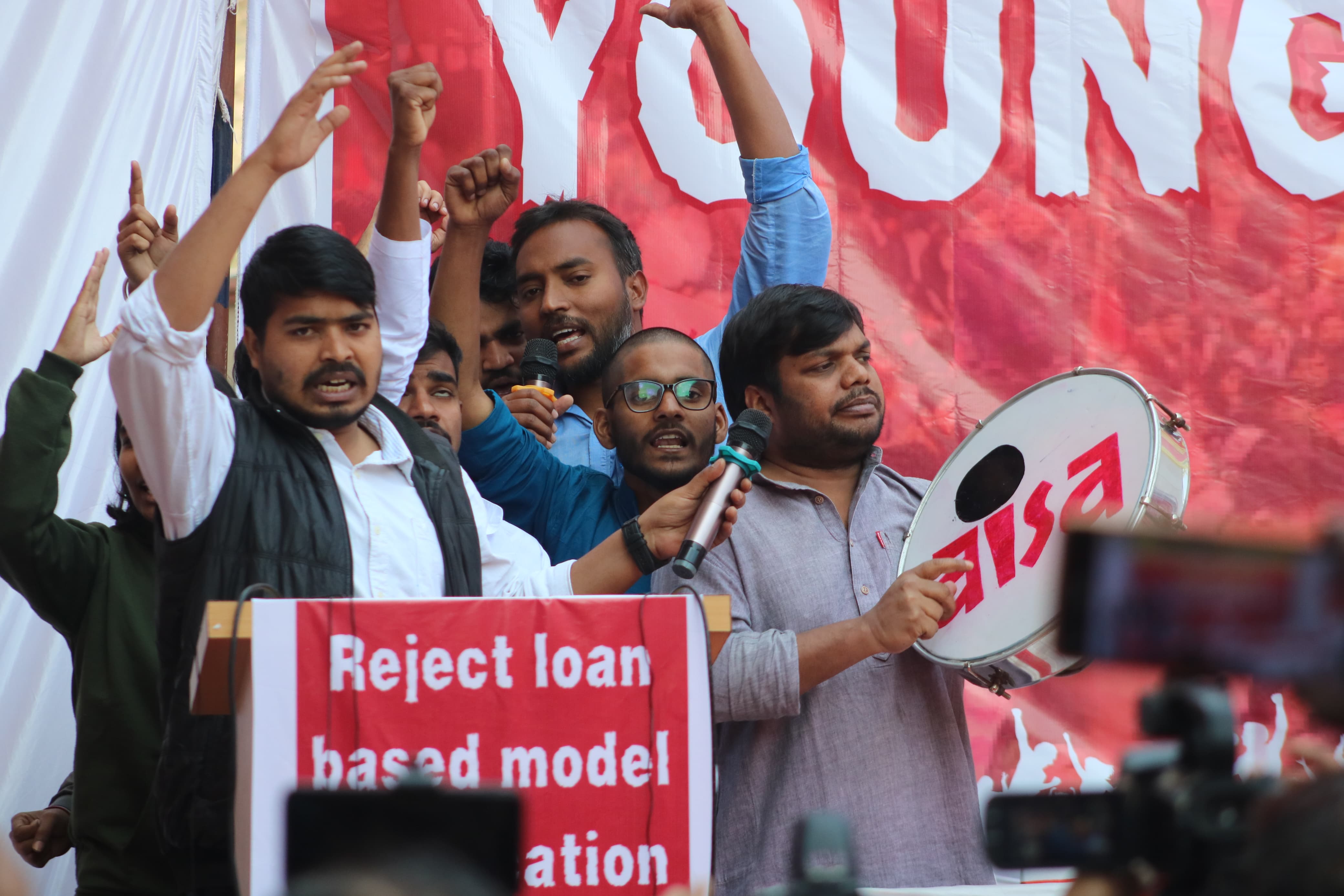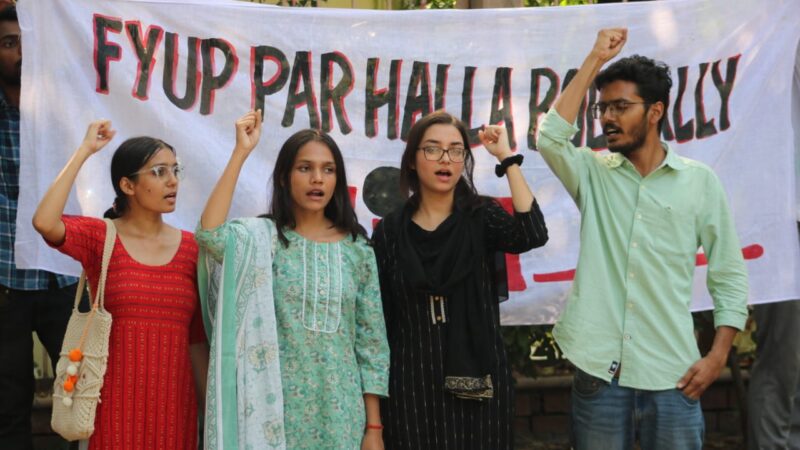Budget 2010: Promoting Inflation and Putting the Burden on the Aam Aadmi
UPA-II’s Union Budget 2010 does nothing to rein in runaway inflation – rather, it proposes to promote inflation and make sure that the lion’s share of the burden of inflation is disproportionately borne by the poor and working people. Meanwhile, the ‘Sensex salute’ that followed the Budget announcement is a testimonial tribute to the Budget’s policy of promoting privatisation and continuing with generous tax sops to the corporate sector.
While announcing a hike of more than Rs. 2.50 per litre of petrol and diesel, the FM also indicated that proposals made in the Kirit Parekh report on fuel price deregulation will be taken up by Petroleum Minister Murli Deora in due course. The Damocles sword of even sharper rise in fuel and other prices thus continues to hang over the people.
The budget does nothing to tackle the pressing issue of food inflation either by way of strengthening and expanding the public distribution system or by addressing the structural roots of the persistent and deep agrarian crisis which lies at the heart of food insecurity and food inflation. The budgetary allocation for Food and PDS has in fact been slashed from Rs.56720.98 in 2009-10 to Rs.56133.05 in this year’s budget!! The Budget makes no move to hike public investment in agriculture or irrigation, or to increase the inflow of rural credit. Apart from some token announcements – such as Rs. 400 crore for ‘green revolution’ in some Eastern Indian states, and some talk of developing ‘climate resilient agriculture’ and developing ‘pulse and oilseed villages,’ or extending the deadline for farm loan repayment by another 6 months, the budget has no initiative on the agrarian front.
A particularly disturbing aspect of the budget lies in the field of tax revenue. Direct tax yield is set to decline by Rs. 26,000 crore (corporate surcharge has been reduced from 10% to 7.5%) while indirect tax revenue is estimated to increase by Rs. 45,000 crore (thanks primarily to an across the board excise hike of 2%). This makes the tax system in India further regressive because the brunt of indirect taxes is always borne disproportionately by the poor and low-income consumers who constitute the overwhelming majority of buyers in Indian markets.
This budget has proposed huge tax reliefs for the top most income holders in our country. Individuals in the lower tax bracket have not got any benefit. They will be affected by the inflation and rising petroleum prices. Changing of slabs will only benefit persons earning above 3 lakhs per annum. Even in this category of ‘benefits’ the extent of tax savings/benefit is extremely skewdly designed so that those in the higher income brackets of above Rs 10 lakhs per annum or more will get maximum of the benefit. This tax relief, as explained by the Finance Minister is to offset the inflationary effects. Well Mr. FM, will you tell us that who are the people worst affected by this inflations the rich or the poor? This tax relief on personal income tax mostly privileging those in the very high income brackets is going to cost Rs 26000 crore deficit to the exchequer.
This particular class bias of the government is also visible in their own admission of “revenue foregone”. The budget statement on “Revenue Foregone” notes the figures as follows: Revenue foregone on account of direct and indirect taxes was Rs. 41,4099 in 2008-09 and this has increased to Rs.50,2299 in 2009-10. The budget document itself admits (quite shamelessly) “.. the amount of revenue foregone continues to increase year after year. As a percentage of aggregate tax collection, revenue foregone remains high and shows an increasing trend as far as Corporate Income-tax is considered for the financial year 2008-09. In case of indirect taxes the trend shows a significant increase for the financial year 2009-10 due to reduction in customs and excise duties… “ Now in a year when profitable PSUs like NHPC and NTPC are being disinvested in the name of curbing Fiscal deficit, this budget clearly shows that whom this government is going to subsidise and at whose cost!
The increase in allocation for rural and social sectors is also extremely inadequate. NREGS has got just Rs 40,100 crore. The Indira Awas Yojana scheme’s unit cost has been raised only marginally to Rs 45,000 in plain area and Rs 48,500 in hilly areas – while agricultural labourers across the country have long been demanding a minimum grant of Rs 1 lakh for housing. A ‘Social Sector Security Fund’ has been announced – but backed with a meagre allocation of just Rs 1000 crore.
In contrast to the inadequate and token allocations for agricultural investment, rural development and social security, the allocation for defence is a whopping Rs 147,000 crore.
Meanwhile the Budget goes full steam ahead with the agenda of privatisation. The government will raise Rs 25,000 crore from disinvestment of its stake in state-owned firms; banking privatisation is being promoted with RBI to give license to some more private sector players and NBFCs; “a firm view on opening up of the retail sector” has been recommended; and gradual coal sector privatisation is also clearly on the agenda. What with the setting up of the Coal Development Regulatory Authority? PSUs like Rural Electrification are also likely to be disinvested. We can well imagine the condition of rural level electrification once it is left to the profit mongering private players!
In higher education, the fund allotted for all the major institution has been slashed to severe degree. For the IITs the fund has been decreased from 1665 crore (last year) to 1660 in this year. The funds of IISc, IIMs and AIIMS has also been reduced by 24 crore, 12 crore and 86 crore respectively.
There has been a slight increase from Rs.25,338 crore in 2009-10 to Rs.33,214 crore in 2010-11 for primary and secondary education sector. But still this amount falls short of the estimated reqirement of Rs. 40,000 crore to fulfil the Kapil Sibal’s much trumpeted Right to Education Bill!
AISA calls upon the Finance Minister to withdraw the hike in petrol and diesel and excise duties, expand the public distribution system, provide at least Rs. 10,000 crore for the social security fund, and increase rural and social sector allocations while reducing the defence outlay and increasing corporate tax. AISA appeals to the working people and mass organisations of the rural poor and peasants as well as trade unions and student-youth and women’s organisations to exert pressure on the government to withdraw inflationary measures and corporate sops and ensure immediate relief for the common people.





